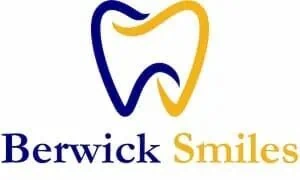On average, braces treatment lasts 18 to 36 months. Factors such as patient age and the complexity of orthodontic issues influence the duration. Younger patients may see quicker results due to adaptable jaws, while adults with rigid bone structures might need more time.
Treatment duration is individualised. Expertise, misalignment severity, and oral health impact treatment time. Regular check-ups and following the dentist’s advice are crucial. Different types of braces or Invisalign have varying treatment times. Monitoring progress and adjustments guide treatment. Accelerated methods, like vibration devices, can shorten treatment.
For more insights on optimising braces duration, consider factors influencing treatment and tips for efficiency.
Average Duration of Braces Treatment
On average, orthodontic braces treatment typically lasts between 18 to 36 months. The duration of braces treatment in orthodontics can vary significantly among patients.
Several factors can affect the length of treatment, such as the age of the patient and the complexity of the orthodontic issues being addressed. Younger patients may experience faster results due to their jaws being more malleable, while adults may require a longer treatment period due to their more rigid bone structure.
The results of braces treatment are highly individualised, depending on the patient’s specific orthodontic needs. Some patients may achieve the desired results within the average timeframe, while others may require additional time to reach their treatment goals.
It is essential for patients undergoing orthodontic treatment to follow their orthodontist’s recommendations diligently to ensure the best possible outcome within the estimated timeframe. Regular check-ups and adjustments are crucial throughout the treatment process to monitor progress and make any necessary modifications to the treatment plan.
How Long Do Braces Take to Straighten Teeth?
Braces typically take 18-24 months to straighten teeth, but it can vary (6 months – 2 years). Treatment time depends on the severity of your case. An orthodontist can give you a more precise estimate during a consultation.
How Long Do Braces Take to Close a Gap of Teeth?
Braces close small gaps in teeth within 6-9 months, while multiple gaps can take 12 months to 2 years. Treatment time depends on gap size and overall orthodontic needs. Consult an orthodontist for a personalized estimate.
How Long Do Braces Take to Fix an Overbite?
Braces fix overbites in 6 months to 2 years. Treatment time depends on severity and how long you’ve had the overbite. Early diagnosis can mean shorter treatment (few months).
Do Braces Take Longer for Adults?
Yes, braces often take longer for adults (3-4 years) than children (2 years). Adult jawbones are fully developed, making movement more challenging. While adult teeth may shift slightly faster, overall treatment takes longer.
Factors Influencing Treatment Time
Factors influencing the duration of orthodontic braces treatment encompass various elements that can significantly impact the overall treatment time. The expertise and guidance of the orthodontist play a crucial role in determining how long the braces need to stay on.
The severity of misalignment or orthodontic issues with the teeth can also affect the treatment time, as more complex cases may require longer treatment periods to achieve the desired results.
Consistent oral health practices, such as proper dental care and maintaining good oral hygiene, are essential factors that can influence the effectiveness of braces treatment and potentially shorten the duration needed.
Additionally, attending regular adjustment appointments as recommended by the orthodontist is vital for ensuring that the braces are working effectively to straighten the teeth. By considering these factors and following the dentist’s guidance closely, patients can help optimise their treatment time and efficiently achieve the desired alignment of their teeth.
Types of Braces and Timing
Different types of braces offer varying treatment times. Traditional metal braces are the most common type used in dental alignment processes.
Typically, treatment with traditional metal braces can range from 18 to 36 months. These braces consist of metal brackets affixed to the teeth and connected by wires. They apply gentle pressure to shift the teeth into the desired position over time.
Clear braces, another type of dental braces, function similarly to traditional metal braces but are less noticeable due to their transparent brackets. The treatment timing with clear braces can be comparable to that of metal braces, lasting around 18 to 36 months, depending on the complexity of the case.
In recent years, aligners have gained popularity as a more discreet alternative to traditional braces. These clear aligners are custom-made to fit the patient’s teeth and are replaced every few weeks to adjust the teeth gradually.
The treatment timing with aligners can vary but generally ranges from 12 to 24 months, with some cases requiring shorter treatment periods compared to traditional braces.
Progress Monitoring and Adjustments
Effective progress monitoring and timely adjustments are essential components in ensuring the success of orthodontic treatment with braces.
This process involves regular check-ups and communication with the orthodontist to track the progress of aligning teeth and make any necessary adjustments to the treatment plan. Here are four key aspects related to progress monitoring and adjustments in braces treatment:
- Regular Appointments: Patients need to attend scheduled appointments per the orthodontist’s recommendations to monitor the treatment progress.
- Adjustments: The orthodontist may need to make adjustments to the braces periodically to ensure the teeth are moving correctly and according to the treatment plan.
- Time Frame: The duration of the treatment and the frequency of adjustments vary based on individual cases, with some treatments lasting for a few months to a few years.
- Treatment Plan Updates: The orthodontist may update the treatment plan based on the progress observed during check-ups to achieve the desired results efficiently.
Accelerating Braces Treatment
Exploring methods to accelerate the alignment of teeth can be beneficial to expedite the orthodontic treatment process with braces. Accelerating braces treatment can shorten the time duration required to achieve desired results.
Orthodontists now have various options and advanced technologies at their disposal to speed up the treatment process. One such method is using high-frequency vibration devices that help to stimulate bone remodelling and facilitate tooth movement. These devices can be used at home for a few minutes each day, complementing the traditional braces treatment.
Another technique involves the use of special brackets and wires that are designed to apply gentle but continuous force on the teeth, thus reducing the overall treatment time. Additionally, some orthodontists may recommend procedures like dental extractions to create more space for crowded teeth, which can also help in accelerating the alignment process.
Tips for Quicker Results
Enhancing the efficiency of your orthodontic treatment can be achieved through strategic adjustments and consistent adherence to prescribed care routines. To achieve quicker results with your braces and maintain optimal oral health, consider the following tips:
- Regular Dental Check-ups: Schedule regular visits with your dentist or orthodontist to ensure your braces work effectively and make the necessary adjustments.
- Follow Care Instructions: Adhere to the care instructions provided by your orthodontist meticulously. This includes proper cleaning, avoiding certain foods that could damage your braces, and wearing any additional appliances as directed.
- Consistent Oral Hygiene: Brush and floss your teeth regularly to prevent any oral health issues that could slow your treatment progress.
- Consultation for Adjustments: Consult your orthodontist for any necessary adjustments or concerns, as they can provide insights into how to make your treatment more efficient and help you achieve a beautiful smile in a shorter timeframe.
Retention Phase and Aftercare
Upon completion of orthodontic treatment, the focus shifts to the crucial Retention Phase and meticulous Aftercare to maintain the achieved results..
During the retention phase, wearing a retainer, as advised by your dentist, is essential to ensure your teeth stay in their new position. Consistent use of the retainer is crucial for long-term success.
Proper aftercare practices are also vital to maintaining oral health and tooth alignment. Regular check-ups with your orthodontist are recommended to monitor progress and adjust the retainer as needed. Additionally, good oral hygiene, including keeping your teeth and retainer clean, is essential.
Cleaning your retainer regularly and correctly will help prevent oral health issues and maintain its effectiveness. By following these guidelines for the aftercare and retention phase, you can help ensure the longevity of your orthodontic treatment results.
Final Verdict: How Long Do You Need to Wear Braces?
Braces wear time typically ranges from 18 to 36 months, but can vary depending on your age, jawbone development, and the severity of your misalignment. Regular dentist visits and good oral hygiene are key to staying on track for a smooth journey towards a straighter smile.
Different types of braces, like Invisalign, which are clear aligners that put gentle pressure on the teeth to move them into place, can affect the total treatment duration and may offer a more comfortable experience for some.
Even with traditional braces, advances in techniques and materials have helped reduce any initial discomfort you might feel when your braces are adjusted.
For expert care and guidance, visit Berwick Smiles in Berwick, VIC, and let our dentist at Berwick help unveil the smile you’ve always dreamed of. Your journey to a confident, straighter smile starts here.








